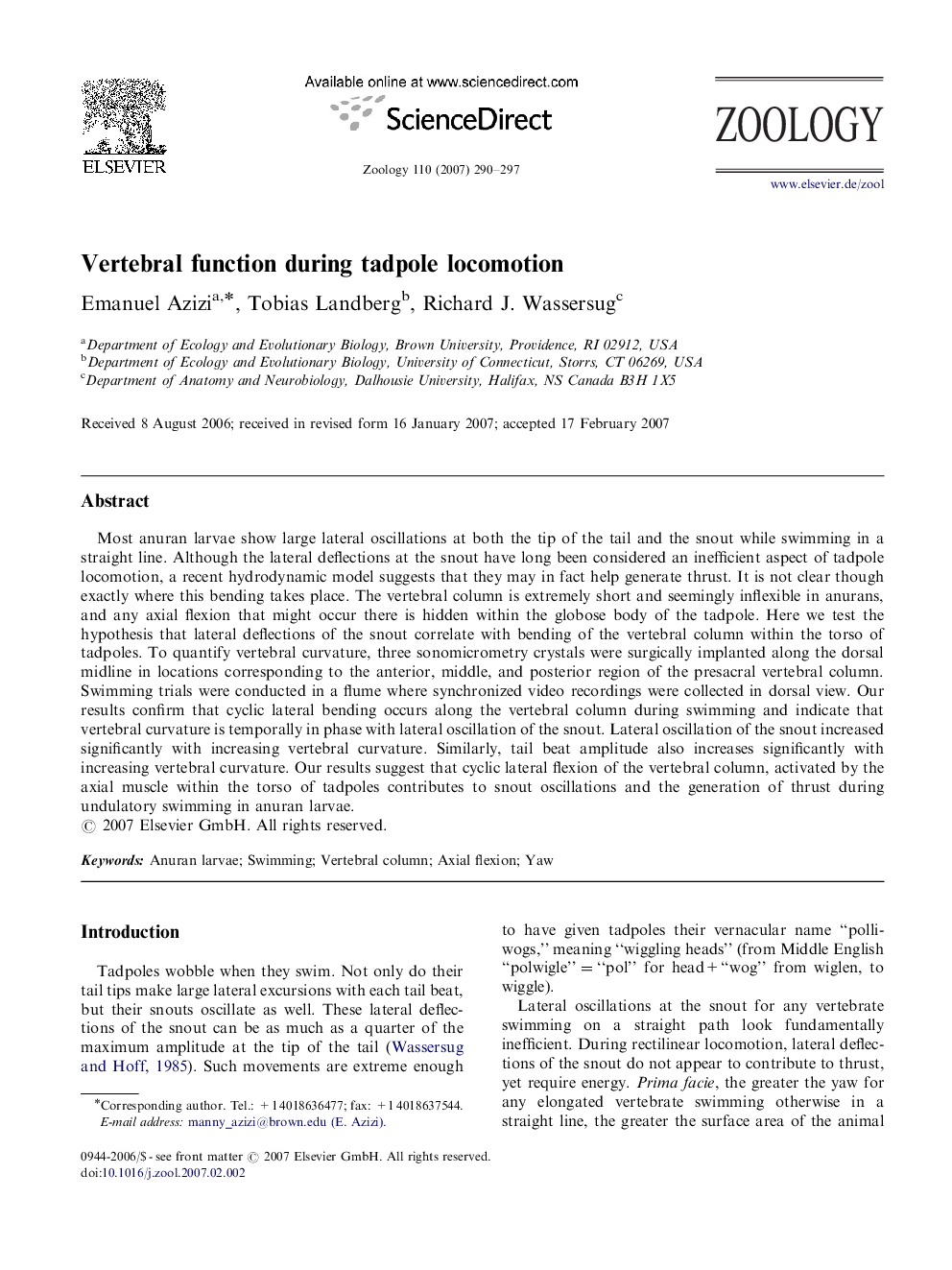| Article ID | Journal | Published Year | Pages | File Type |
|---|---|---|---|---|
| 2791435 | Zoology | 2007 | 8 Pages |
Most anuran larvae show large lateral oscillations at both the tip of the tail and the snout while swimming in a straight line. Although the lateral deflections at the snout have long been considered an inefficient aspect of tadpole locomotion, a recent hydrodynamic model suggests that they may in fact help generate thrust. It is not clear though exactly where this bending takes place. The vertebral column is extremely short and seemingly inflexible in anurans, and any axial flexion that might occur there is hidden within the globose body of the tadpole. Here we test the hypothesis that lateral deflections of the snout correlate with bending of the vertebral column within the torso of tadpoles. To quantify vertebral curvature, three sonomicrometry crystals were surgically implanted along the dorsal midline in locations corresponding to the anterior, middle, and posterior region of the presacral vertebral column. Swimming trials were conducted in a flume where synchronized video recordings were collected in dorsal view. Our results confirm that cyclic lateral bending occurs along the vertebral column during swimming and indicate that vertebral curvature is temporally in phase with lateral oscillation of the snout. Lateral oscillation of the snout increased significantly with increasing vertebral curvature. Similarly, tail beat amplitude also increases significantly with increasing vertebral curvature. Our results suggest that cyclic lateral flexion of the vertebral column, activated by the axial muscle within the torso of tadpoles contributes to snout oscillations and the generation of thrust during undulatory swimming in anuran larvae.
